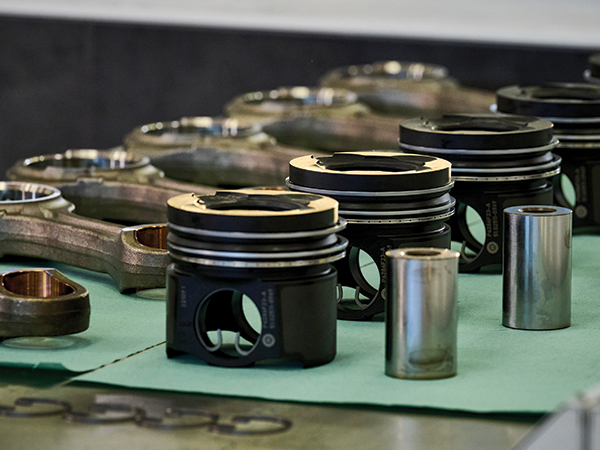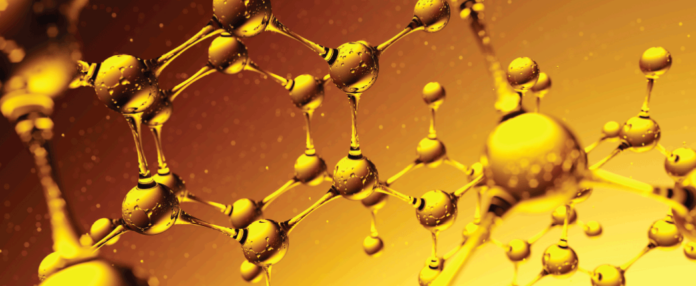The lubricants industry is facing some of the most challenging market dynamics in decades, with multiple external forces driving the speed and direction of progress. The global COVID-19 pandemic generated a wave of supply chain disruptions and logistical challenges. The drive for cleaner transportation is driving new regulations and hardware designs. Developments in new energy options and regional variance in uptake are adding further complexity to vehicle production and design. Global relations are in flux, affecting the stability of certain markets and causing significant strain on standard supply routes and resources.
Additive suppliers are constantly faced with challenges that require them to innovate and adapt to changing circumstances. These range from formulating solutions that meet ever more demanding specification performance requirements, to demonstrating their ability to add value in a complex and dynamic market, to assisting oil marketers in obtaining the maximum potential they can from their product portfolios. Navigating these challenges requires a deep understanding of the industry as well as a commitment to excellence.
Taking Europe as an example, the current vehicle market is made up of an array of original equipment manufacturers (OEMs) with a wide range of vehicle ages in both the passenger car and heavy-duty vehicle sectors. Each model comes with its own duty cycles and lubricant performance requirements as defined by the manufacturer.
Combined, this creates a vehicle parc of approximately 370 million vehicles on the roads of Europe, which in turn yields a significant but highly complex lubricant market.
To support this diverse vehicle parc, oil marketers and additive suppliers must navigate many OEM and industry specifications to provide effective portfolios capable of supporting the needs of all vehicle hardware and meeting the latest demands on emissions targets and performance. Ensuring product portfolios reflect the latest specifications provides both OEMs and consumers with the security that their vehicles are protected, regardless of their age.
The European lubricant market is not one to stand still and is continuously evolving, driven by legislation such as the current Euro 6 and future Euro 7 emissions standards, demanding further reduced vehicle emissions. In an effort to hit these increasingly stringent targets, OEMs are regularly advancing vehicle technology. And with new technology often comes new challenges, such as more severe operating conditions, driving the need for higher-quality lubricant performance.
Adapting to the needs of this market and the demands of the supply chain requires a highly flexible approach, enabling adaptation to the needs of the local market as well as the demands of the latest regulations. In addition, an in-depth knowledge of the testing and development for both the industry standard specifications—such as The European Automobile Manufacturers’ Association (ACEA) specifications—and the OEMs’ hardware and own specifications is pivotal. This requires adhering to the associated testing protocols, including laboratory tests, engine tests and field trials.
However, where there is great complexity there is also notable opportunity. To capitalize on the opportunity, oil marketers must skilfully find a way to navigate the breadth of OEM specifications and manufacturing considerations required to support the diverse vehicle parc to develop a winning lubricant portfolio.
Using the Correct Lubricant to Maximize Efficiency and Performance
As highlighted above, industry specifications such as those set forth by ACEA or the American Petroleum Institute (API)—alongside OEM specifications and approvals—form a safety net for OEMs, enabling them to dictate the minimum performance requirements and specific compatibility of engine oils being used in their vehicles.
However, it is not just about meeting stricter performance requirements. Companies in the lubricants industry seek differentiation that goes beyond the specification. Success is about staying ahead of market trends, creating bespoke testing capabilities and providing data to demonstrate differentiated product performance. When and how it is needed, customers can be confident in both the testing and resulting data, creating a competitive advantage.
The Importance of Advanced Lubricant Formulations and Testing Protocols
At Lubrizol, we recognize the importance of advanced lubricant formulations and testing protocols. We have made substantial investments in research, development and testing on a global scale to ensure a local-for-local network and the implementation of processes that go beyond running a test. It is a process where we study, learn, cultivate and develop unmatched analysis and testing protocols in support of quality and data integrity. Our research, development and testing expertise means our customers maintain
their competitive edge and are armed with the certifying credentials necessary to bring advanced lubricants to market.
A key part of the ever-changing vehicle application marketplace is enabling product development from the design and the synthesis of new molecules. This research and development process is enabled by extensive analysis and testing—which can include mechanical and field trial testing—to ensure that the customer’s requirements are always delivered and that their industry challenges are solved.
Laboratory testing plays a crucial role in the development of additives and provides a controlled environment for exploring their performance under demanding conditions. Comprehensive testing capabilities enable the acquisition of fundamental knowledge, which can be used to influence the final design of an additive package. These capabilities ensure that the performance of the additive package is refined to meet specific customer requirements before being released for engine and in-the-field testing, making sure that the blend of components performs optimally in real-world scenarios.

But it is not just about running tests in a laboratory and engine tests. It is essential to test formulations on real-world hardware to evaluate the accuracy and repeatability of the additive package’s performance, ensuring that products are robust and meet the ever-evolving demands and specifications of the market. This field testing generates a vast amount of data, which is used to quantify the performance of formulations and enable formulators to understand the effects of chemistry on hardware.
Testing is a crucial step in ensuring the quality and reliability of a product. It also plays an important role in the design of new industry standard tests and generates fundamental knowledge for research and development teams. When testing is performed appropriately, it forms a vital role in elevating the industry and boosting customers’ confidence in their brands.
While many companies perform testing, not everyone does it on the same scale as Lubrizol. Furthermore, not all companies are able to learn on the same scale or share knowledge on the same scale. As a result, Lubrizol’s partners have unmatched confidence and trust in their products. We believe that testing, learning, building confidence and succeeding together are the keys to achieving success in any industry.
A single project can contain hundreds of tests and require significant investment, and our technical teams ensure end-to-end management of the projects from concept, to testing, to product delivery. That is why we at Lubrizol place great value on our in-house capabilities. With over 800,000 tests conducted annually, we are not only keeping up with industry trends but also setting them while overcoming new formulating challenges to protect the latest hardware.
Outlook for the Future of Testing
Consider the role that testing can and must play moving forward, where markets are much more dynamic and the array of hardware designs is significantly more diverse. With each new version of general industry specifications comes increased complexity. However, with the rise of vehicle designs powered by a wider range of energy sources, we must imagine that there will be new specifications that continue to set the bar for the required hardware performance.
Collaboration among OEMs, oil marketers and additive technology companies is crucial for the successful development of performance standards. It demands true partnerships to succeed. Over the decades, we have built strategic partnerships that allow us to collaborate more closely, share information and arrive at solutions more quickly. Transportation markets can be unpredictable, and not all vehicle designs will be successful eventually. However, the key is not to predict the future but rather to find ways to be more agile. Incorporating testing into the go-to-market process is part of the solution toward achieving greater agility.

In conclusion, the significance of advanced lubricant formulations and testing protocols cannot be overemphasized, as lubricant testing constitutes a vital aspect of maintenance and reliability management. Lubrizol’s approach to testing goes beyond the standard, allowing it to differentiate itself in the market, meet stricter performance requirements, and build unparalleled confidence and trust in its products.
With a focus on differentiated testing capabilities, companies can prepare for rapidly changing markets, anticipate market needs and create a brighter future for all.
Sander van Donk is vice president of Lubrizol Additives, Europe.
Helena Cressey is senior director of Lubrizol Additives Technology, Europe.
